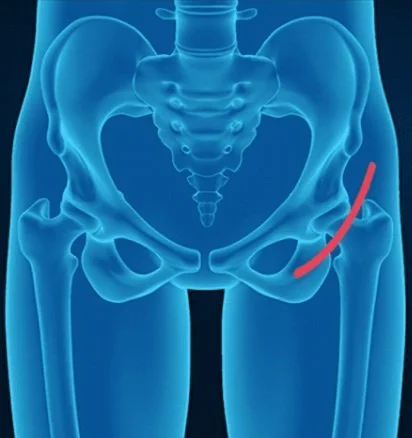Hip Replacement Surgery Options
Anterior Hip Replacement: Overview
Anterior hip replacement is a modern, minimally invasive approach where the surgeon accesses the hip joint from the front of the body. This technique avoids cutting through major muscles, leading to less post-operative pain, a quicker initial recovery, and a lower risk of dislocation. Many patients return to daily activities faster with fewer movement restrictions. However, the procedure is more technically challenging, requires specialized surgical equipment, and may not be suitable for all body types. There is also a small risk of nerve irritation and femur fractures due to the way the hip is accessed.
Posterior Hip Replacement: Overview
The posterior approach is the traditional and most commonly performed hip replacement surgery. The surgeon accesses the hip joint from the back, providing a clear view and making it a more familiar technique for most surgeons. It works well for a wide range of patients and has a long track record of success. However, because the surgery involves cutting through muscle, recovery tends to take longer, and there is a higher risk of dislocation. Patients must follow post-surgery precautions, such as avoiding bending past 90 degrees or crossing their legs, to prevent complications. Despite these restrictions, the posterior approach remains a reliable and widely available option for hip replacement.
Pros vs Cons
Posterior Hip Replacement: Pros & Cons
✅ Pros:
Widely Available & Well-Understood – The most common approach, meaning more surgeons have experience with it.
Easier Access for the Surgeon – Allows for better visibility of the hip joint during surgery.
Suitable for Most Patients – Works well for patients with a variety of body types and bone structures.
Less Risk of Femur Fracture – Unlike the anterior approach, it does not put extra stress on the femur.
Proven Long-Term Success – This approach has been used successfully for decades with strong outcomes.
❌ Cons:
Longer Initial Recovery – Since muscles are cut, it takes more time to regain strength and mobility.
Higher Risk of Dislocation – The posterior approach disrupts stabilizing muscles, requiring movement precautions.
More Post-Op Pain – Recovery tends to be more painful due to muscle involvement.
Larger Incision & More Scarring – Typically requires an 8- to 12-inch incision, leading to a more visible scar.
Activity Restrictions – Patients must follow strict movement precautions (e.g., avoiding bending past 90° or crossing legs) for several weeks.
Anterior Hip Replacement: Pros & Cons
✅ Pros:
Faster Initial Recovery – Patients often regain mobility sooner due to minimal muscle disruption.
Less Post-Op Pain – The front approach avoids cutting major muscles, reducing early discomfort.
Lower Risk of Dislocation – The anterior approach is more stable due to the preservation of key muscles.
Easier on Active Patients – Ideal for those looking to return to walking, cycling, and low-impact exercise quickly.
Smaller Incision & Less Scarring – Typically performed with a 3- to 5-inch incision, leading to better cosmetic results.
❌ Cons:
Technically Challenging – Requires a skilled surgeon and specialized equipment, limiting availability.
Not Ideal for All Body Types – Patients with a high BMI or certain bone structures may not be candidates.
Risk of Nerve Irritation – The lateral femoral cutaneous nerve is near the incision, increasing the chance of numbness.
Potential for Fractures – The approach can put more stress on the femur, increasing the risk of small fractures.
Operating Table Limitations – Often requires a specialized table, which may not be available in all hospitals.
So, which is best?
Honestly? They’re both great! The success of your surgery depends more on the skill of your surgeon than the specific technique used.
In my case, I chose the posterior approach, but only because I had access to a highly reputable surgeon in my area who specialized in that method. The most important thing is to find a surgeon you trust, one with great reviews and extensive experience performing only hip replacements.
Many orthopedic surgeons today focus exclusively on one joint (hip or knee) and one surgical approach (anterior or posterior). This specialization helps ensure they are highly skilled in their chosen technique.
Both anterior and posterior hip replacements have helped thousands of people regain mobility and live pain-free lives. The best choice for you depends on your body type, surgeon availability, and personal preferences.

